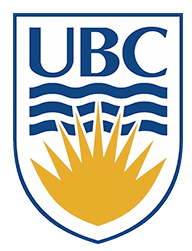Assignment 4: Local Invariant Features and RANSAC
Due: At the end of the day (11:59pm), Tuesday, March 19, 2019.
The purpose of this assignment is to understand and to implement image matching using local invariant features.
The assignment
-
This assignment will make use of the SIFT features that are described in the paper Distinctive Image Features from Scale-Invariant Keypoints, by David Lowe. You don't need to read the whole paper, but you may wish to refer to parts of it to understand the approach.
-
The zip file containing sample images and code is hw4.zip. The unzipped directory, assign, contains a skeleton Python program SIFTmatch.py (which you can run by typing
python SIFTmatch.pyat the command prompt). It also contains image files and their associated SIFT features that have been precomputed for some sample images. See the README file for further information, including how to run the sample program keypoints to compute SIFT features on images of your own choosing.
-
(11 points)The sample program, SIFTmatch.py, loads two images and their invariant keypoints and then draws 5 lines between randomly selected keypoints to show how matches can be displayed. Your task is to improve this program so that it identifies and displays correct matches by comparing the keypoint descriptor vectors. Note: Your program should find all possible matches, not just 5 as shown in this sample.
The function match in the file SIFTmatch.py loads the invariant descriptor vectors into array descriptors1 for the first image and descriptors2 for the second. Each row corresponds to a descriptor vector. To select the best match for a vector from the first image, you should measure its angle to each vector from the second matrix. As the descriptor vectors are already normalized to have unit length, the angle between them is the inverse cosine (math.acos(x) function in Python) of the dot product of the vectors. The vector with the smallest angle is the nearest neighbor (i.e., the best match).
However, many keypoints from one image will have no good match to the second image. To eliminate false matches, the most effective method is to compare the smallest (best) match angle to the second-best angle. A match should be selected only if this ratio is below a threshold. Hints: The Python function sorted can be used to find the two smallest values in a list. The list method index can then be used to determine the (original) indices of these sorted elements.
Select a threshold that gives mostly good matches for the images ``scene'' and ``book.'' Try different thresholds so that only a small number of outliers are found (less than about 10). You can judge this by eye, as the outliers will usually produce matching lines at clearly different angles from the others. Print the box image showing the set of matches to the scene image for your suggested threshold value. Write a short description of the particular threshold value used, why you chose it and how important it was to get the value correct.
-
(14 points)The second part of this assignment is to reduce the number of false matches by using RANSAC. For each RANSAC iteration you will select just one match at random, and then check all the other matches for consistency with it. Repeat the random selection 10 times and then select the largest consistent subset that was found. Assume that we are sampling with replacement (in RANSACFilter) and that the final consensus set should include the initial match, i.e., the size of consistency set is at minimum 1.
To check other matches for consistency with the first match, you need to use the keypoints1 and keypoints2 arrays that are provided for each image. Each row provides 4 numbers for a keypoint specifying its location, scale, and orientation in the original image (see the function ReadKeys in the file SIFTmatch.py for details).
To check that one match is consistent with another, you should check that the change of orientation between the two keypoints of each match agrees within, say, 30 degrees. In other words, if the two keypoints for one match have a difference in orientation of 130 degrees, the second match should have an orientation difference between 100 and 160 degrees. It is best to consider an example here. Suppose we want to compare 2 matches for consistency in orientation. The keypoint orientations from the first match are 45 degrees and -45 degrees. The orientation from the second match are 0 and 90 degrees. You should start by computing the difference in orientation for the two matches: d1 = -45 - 45 = -90 and d2 = 90 - 0 = 90. The difference between the two matches in this case is 180 degrees and would be outside the 30 degree tolerance, hence the second match is not part of the consensus set. Note that orientation is measured in radians, and that orientations are equal modulo 2 pi. Also, check that the change of scale agrees within plus or minus, say, 50%. Assuming two keypoints have scales s1 and s2, the change in scale is defined as s2/s1 (see slides). As an example, if the change of scale for our first match is 3, then to be within a consensus set, the second match must have change in scale within the range of 1.5 to 4.5 (assuming scale agreement of plus or minus 50%). For this assignment, we won't check consistency of location, as that is more difficult.
Try different values for the orientation and scale agreement (instead of using 30 degrees and 50% as mentioned above), and raise the matching threshold to get as many correct matches as possible while having only a few false matches. Try getting the best possible results on matching the difficult UBC ``library'' images.
Include resulting library images showing your best set of matches in a PDF. Aslo include in a PDF a paragraph summarizing the effects of consistency checking and the degree to which it allowed you to raise the matching threshold.
Deliverables
Hand in your functions (i.e., *.py files) or a Jupyter Notebook and PDF file showing results and answering questions. These must have sufficient comments for others to easily understand the code. Note you will have to hand in,
- the book image showing the set of matches to the scene image for your suggested threshold value
- the library images showing your best set of matches.
as part of the PDF. Both Python files and PDF should be submitted through Canvas


